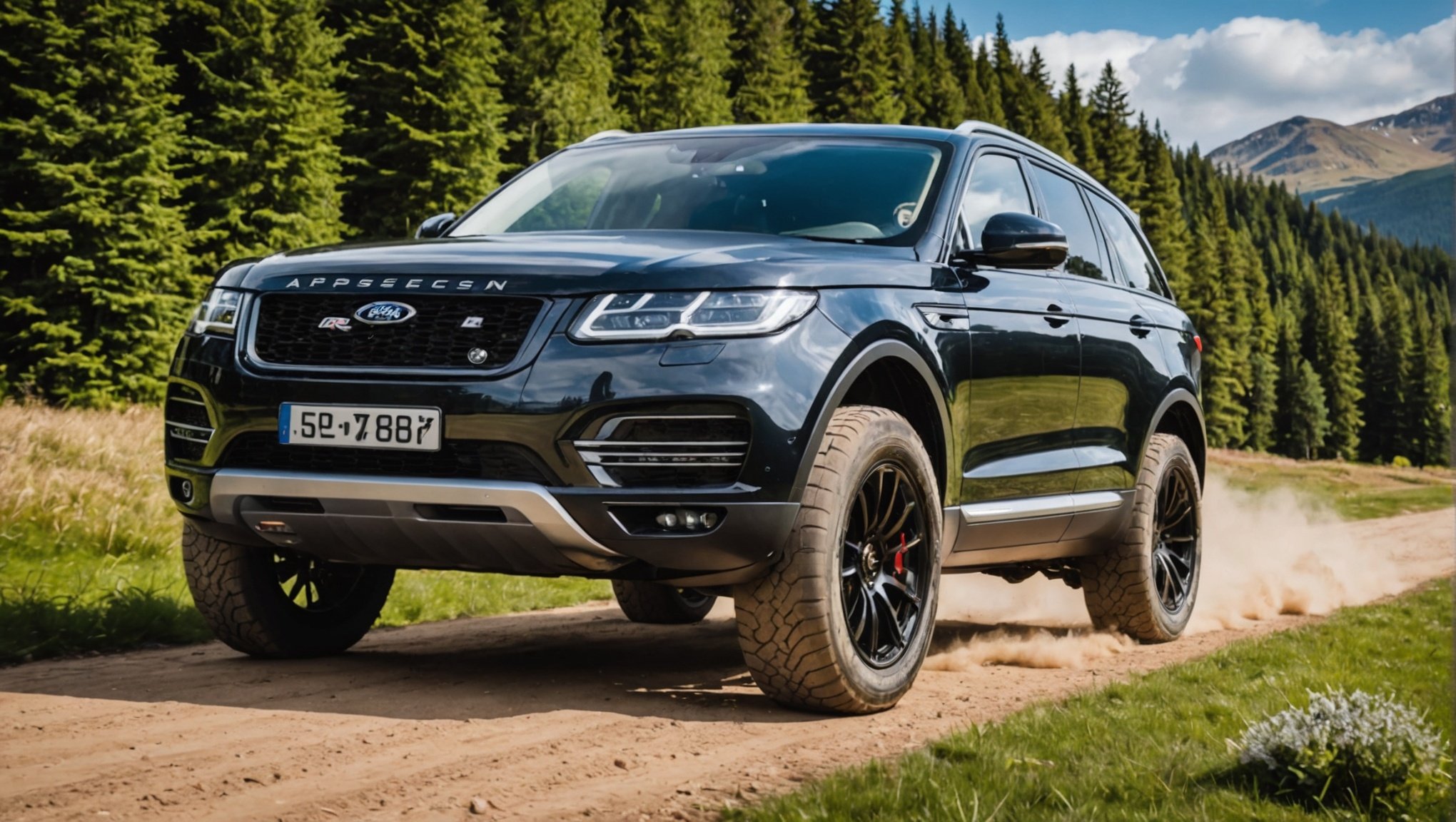Mastering air suspension setup can transform your British SUV into an all-terrain conqueror. This comprehensive guide will help you understand the nuances of air suspension, enabling better handling, improved comfort, and enhanced performance. Whether you’re tackling rugged landscapes or cruising on smooth highways, finding the perfect balance is essential. Equip yourself with the right techniques, tips, and insights to elevate your driving experience and tackle any environment with confidence. Ready to redefine your off-road adventures?
Understanding Air Suspension Systems
Air suspension systems have become a popular choice in British SUVs, enhancing both comfort and off-road performance. At its core, air suspension technology replaces traditional coil springs with air springs. These air springs are flexible rubber bladders filled with compressed air, allowing for adjustable ride height and improved adaptability to various terrains.
Have you seen this : Mastering Headlight Alignment for Classic British Cars: A Complete Guide to UK Road Compliance
Benefits for British SUVs
For British SUVs, air suspension offers several advantages. Firstly, it provides a smoother ride by absorbing road irregularities more effectively than traditional suspensions. This is particularly beneficial for off-road performance, as it allows the vehicle to maintain stability and traction on uneven surfaces. Additionally, the adjustable ride height feature enables drivers to raise the vehicle for off-road adventures or lower it for improved aerodynamics on highways.
Key Components of an Air Suspension System
An air suspension system consists of several key components:
Topic to read : Essential Tips for Effective Fuel Line Insulation in UK Performance Cars
- Air springs: These replace conventional coil springs and are crucial for load support and ride comfort.
- Air compressor: This device generates compressed air to fill the air springs.
- Height sensors: These sensors monitor the vehicle's ride height and adjust the air springs accordingly.
- Control module: This module manages the system's operations, ensuring optimal performance and safety.
Understanding these components can help drivers appreciate the advanced engineering behind air suspension systems, especially in enhancing the capabilities of British SUVs.
Step-by-Step Air Suspension Setup
Setting up an air suspension system in your British SUV can greatly enhance its performance and comfort. This installation guide will walk you through the process, ensuring a smooth transition from traditional to air suspension.
Preparing Your British SUV for Air Suspension
Before beginning the air suspension setup, ensure your British SUV is parked on a flat surface and the ignition is off. This prevents accidental movement during installation. Check that all components of the air suspension system are present, including air springs, compressor, height sensors, and control module. Preparation is key to a successful installation.
Tools and Equipment Needed
To install the air suspension system, gather the following tools:
- Socket set: For removing and securing bolts.
- Jack and stands: To safely lift and support the vehicle.
- Air hose: For connecting the compressor to the air springs.
- Wrench set: Essential for tightening various fittings.
Having the right equipment ensures a hassle-free installation process.
Detailed Installation Steps
- Lift the SUV: Use the jack and stands to elevate your vehicle.
- Remove existing springs: Detach the traditional coil springs.
- Install air springs: Replace old springs with new air springs.
- Connect air compressor: Attach the compressor to the air springs via the air hose.
- Calibrate height sensors: Ensure sensors are accurately monitoring ride height.
This step-by-step guide will help you achieve optimal performance from your new air suspension system.
Adjusting Air Suspension for Different Terrains
Air suspension adjustment is crucial for achieving optimal terrain optimization and ensuring off-road comfort. Understanding how to adjust air pressure settings allows drivers to tailor their vehicle's performance to the specific demands of different terrains.
Factors Affecting Air Pressure Settings
Several factors influence the appropriate air pressure settings for your SUV. These include the vehicle's weight, the terrain type, and the desired ride comfort. For instance, heavier loads may require increased air pressure to maintain stability, while lighter loads can operate with lower pressure for a softer ride.
Recommended Settings for Various Terrains
- Highway Driving: Lower air pressure can improve aerodynamics and fuel efficiency.
- Rocky Terrain: Higher pressure aids in avoiding damage from sharp rocks.
- Sandy Areas: Moderate pressure prevents sinking and maintains traction.
Tips for On-the-Fly Adjustments
For off-road trips, it's beneficial to make on-the-fly adjustments. Use the control module to quickly change settings based on real-time conditions. Always ensure the vehicle is stationary during adjustments to avoid instability. This flexibility enhances both safety and comfort, allowing for a smoother journey regardless of terrain challenges.
Comparing Different Air Suspension Systems
Selecting the right air suspension system for your British SUV can significantly impact performance and comfort. Understanding the differences between various brands and their performance metrics is essential.
Overview of Popular Air Suspension Brands
Several brands dominate the market, each offering unique features. Arnott is renowned for its high-quality components and durability. Air Lift provides versatile systems with excellent adjustability, ideal for varied terrains. Firestone focuses on reliability and ease of installation. These brands cater to different needs, making it crucial to consider your specific requirements when choosing.
Performance Metrics to Consider
When comparing air suspension systems, evaluate key performance metrics:
- Durability: Assess the lifespan and material quality.
- Adjustability: Consider the range of height and pressure adjustments.
- Load Capacity: Ensure the system supports your SUV's weight and intended use.
- Ride Comfort: Look for systems that effectively absorb shocks and provide a smooth ride.
User Reviews and Testimonials
User reviews offer valuable insights into real-world performance. Many British SUV owners praise the Air Lift systems for their adaptability and ease of use. Arnott often receives commendations for its robust construction and longevity. Testimonials highlight the importance of matching the system to your driving habits and terrain preferences.
Troubleshooting Common Air Suspension Issues
Air suspension systems, while advanced, can experience issues that require attention. Understanding Air Suspension Troubleshooting is essential for maintaining your vehicle's performance.
Identifying Common Problems
Common problems include air leaks, faulty compressors, and malfunctioning height sensors. Air leaks can cause the vehicle to sag, while a faulty compressor may lead to inadequate air pressure. Malfunctioning height sensors can result in incorrect ride height adjustments.
Step-by-Step Troubleshooting Guide
-
Inspect for Air Leaks: Listen for hissing sounds around the air springs and connections. Use soapy water to identify leaks by looking for bubbles.
-
Check the Compressor: Ensure the compressor is functioning by listening for its operation. If silent, inspect electrical connections and fuses.
-
Test Height Sensors: Verify that sensors accurately detect ride height. Use diagnostic tools to recalibrate if necessary.
Preventative Maintenance Tips
- Regular Inspections: Frequently check air springs and connections for wear.
- Compressor Care: Clean filters and ensure adequate ventilation.
- Sensor Calibration: Regularly recalibrate sensors to maintain accuracy.
By addressing these Common Problems and following these Maintenance Tips, you can extend the lifespan of your air suspension system and ensure optimal performance.
Unique Considerations for British SUV Models
When considering air suspension systems for British SUV models, there are unique factors to keep in mind. These vehicles often come with specific British SUV features that may influence the compatibility and performance of the air suspension.
Air Suspension Needs of Popular British SUV Models
Each British SUV model, such as the Land Rover Defender or the Range Rover, has distinct characteristics that may require tailored air suspension compatibility. For example, the Defender's robust design might benefit from systems that offer increased load capacity, while the Range Rover might prioritise ride comfort and adjustability for luxury travel.
Modifications or Adaptations Needed
In some cases, installing an air suspension system may necessitate model-specific advice or modifications. Certain models might require additional brackets or adjustments to accommodate the air springs or compressors. It's crucial to consult with a professional to ensure these adaptations are performed correctly, maintaining the vehicle's integrity and performance.
Manufacturer Recommendations
Manufacturers often provide guidelines for the air suspension compatibility of their models. Adhering to these recommendations ensures optimal performance and avoids potential warranty issues. Always check the manufacturer's advice regarding load limits and preferred air suspension brands to ensure a seamless integration with your British SUV.
Case Studies: Success Stories from British SUV Owners
Real-world air suspension case studies highlight the transformative impact on British SUVs. Owners frequently report enhanced comfort and handling, especially during off-road adventures.
For instance, one user shared their experience with a Land Rover Defender, citing significant improvements in ride quality. The air suspension allowed for seamless transitions between rocky terrains and smooth highways. This adaptability not only improved comfort but also maintained vehicle stability, crucial for challenging conditions.
Another notable user experience involved a Range Rover owner who praised the system for its versatility. The ability to adjust ride height on-the-fly provided a unique advantage during a cross-country trip. This feature ensured optimal aerodynamics on highways and superior clearance on rugged paths.
Lessons learned from these off-road adventures emphasize the importance of understanding your vehicle's capabilities. Many users noted the necessity of regular maintenance and staying informed about the system's functions to maximize benefits. These experiences underscore the practicality and enhanced performance that air suspension systems bring to the table, making them a valuable addition for any British SUV enthusiast looking to elevate their driving experience.
Visual Aids and Resources for Air Suspension Setup
When setting up an air suspension system, visual aids can be invaluable. They offer clear guidance and enhance understanding, making the process more approachable.
Diagrams of Air Suspension Systems
Air suspension diagrams are essential tools for visualising the system's layout. These diagrams illustrate the positioning of components like air springs, compressors, and height sensors. By studying these diagrams, you can grasp the intricate connections and ensure each part is correctly installed. They serve as a blueprint, helping you to identify and rectify potential issues during the setup.
Video Tutorials for Installation and Adjustment
For those who prefer dynamic learning, video tutorials provide step-by-step instructions. These visual guides demonstrate the installation and adjustment process, offering practical insights and real-time solutions to common challenges. Watching experts handle components can boost your confidence and ensure a smoother installation experience.
Recommended Reading and Online Communities
Engaging with setup resources like recommended reading materials and online communities can further enrich your understanding. Books and articles offer in-depth knowledge, while forums and social media groups allow you to connect with experienced enthusiasts. These platforms provide a space to ask questions, share experiences, and gain advice tailored to your specific air suspension setup needs.
















